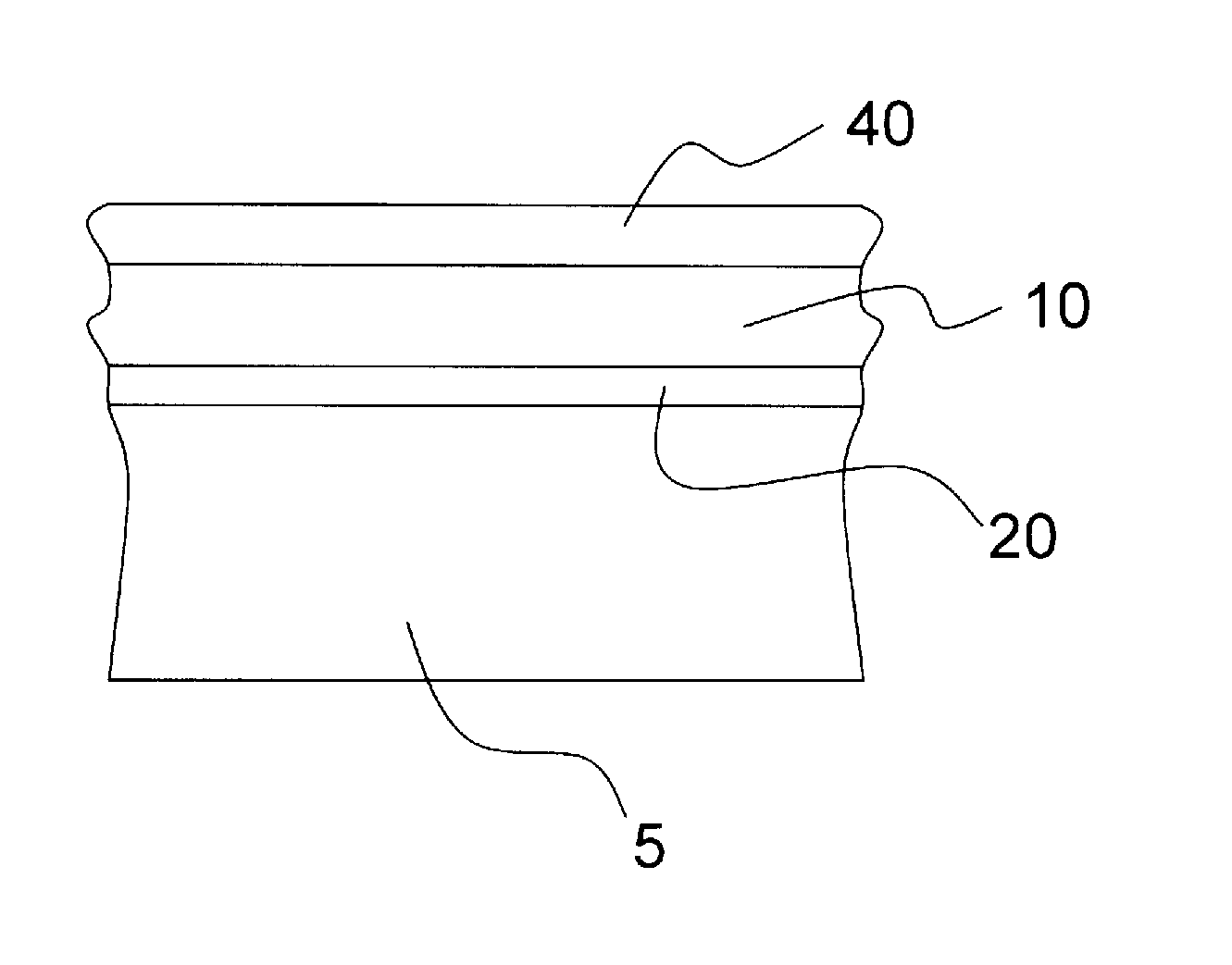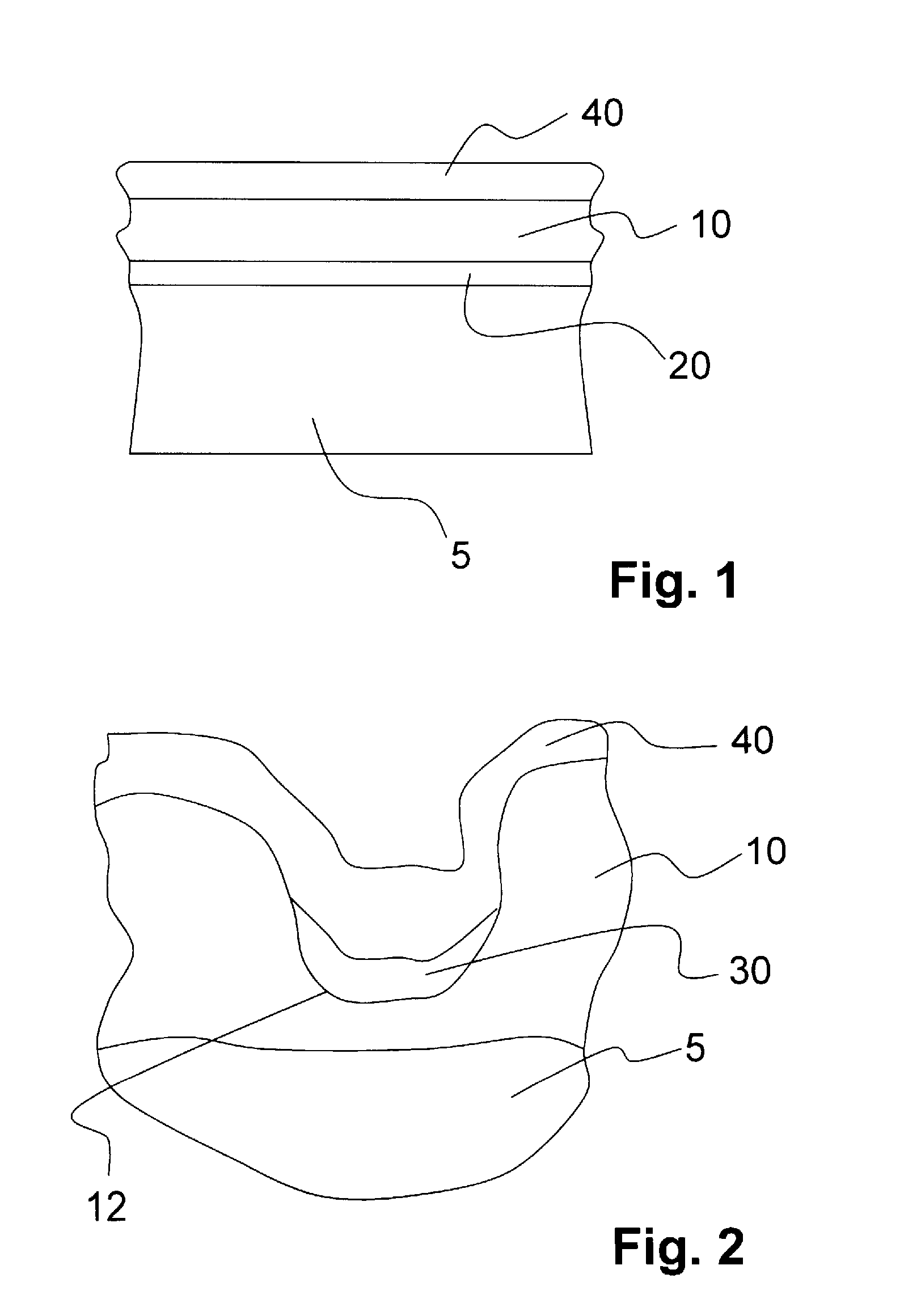Implant and Method for Manufacturing Same
a manufacturing method and implant technology, applied in the field of implants and manufacturing methods, can solve the problems of implant loss, vascular occlusion, and gradual overgrowth of the stent, and achieve the effects of reducing the risk of vascular occlusion, and reducing the effect of vascular occlusion
- Summary
- Abstract
- Description
- Claims
- Application Information
AI Technical Summary
Benefits of technology
Problems solved by technology
Method used
Image
Examples
example 1
[0073]First a stent with a body consisting of a magnesium alloy, preferably WE43 (93 wt % magnesium, 4 wt % yttrium (W) and 3 wt % rare earth metals (E) not including yttrium) is made available.
[0074]Then the aqueous solution (electrolyte) is prepared by first pouring 500 mL distilled H2O into a glass beaker. Then the components of the aqueous solution are added in the order given below. It should be noted that the next following component may be added only after the preceding components have completely dissolved. The electrolyte is to be stirred constantly during this addition, which can be implemented with a magnetic stirrer (500 min−1), for example. The components should also be added slowly to prevent excessive evolution of heat. The electrolyte synthesis may preferably take place in a double-walled coolable container. The following components may be added (all the following percentage amounts are percent by weight (wt %)):
1. 100 mL / L ethylenediamine solution (99%),
[0075]100 g / L...
example 2
[0088]This example describes the coating of nonresorbable implants of nitinol, stainless steel or cobalt-chromium alloys or degradable materials with a second layer 20 of metals, containing at least one element from the group of tantalum, niobium, zinc, iron and aluminum. The implant is first produced with known technologies such as laser cutting, electropolishing, etc., forming a body 5 (see FIG. 1). Then the surface of the body 5 is coated with tantalum, niobium, zinc, iron, aluminum or an alloy containing these metals. The coating technologies used may include ionic liquids, sputtering, high-rate atomization or vaporization.
[0089]The second layer 20 is preferably produced with tantalum on a nitinol implant by means of an ionic liquid 1-butyl-1-methylpyrrolidiniumbis(trifluoromethylsulfonyl)amide from TaF5, forming a tantalum layer 20 that is 0.5 μm to 1 μm thick, adhering securely due to anodic preoxidation of nitinol in the ionic fluid, so that it is difficult to remove mechanic...
example 3
[0099]Like Example 2, which is incorporated herein.
[0100]After drying in a drying cabinet, instead of dipping the implant in or spraying it with polymer solutions as the first layer, the implant is dipped in aqueous or nonaqueous media in which bone morphogenetic proteins (BMPs) are dissolved, the latter being drawn into the pore structure by applying a vacuum, then remaining there after the drying process. so they have a positive influence on bone growth in the case of orthopedic implants.
PUM
| Property | Measurement | Unit |
|---|---|---|
| Temperature | aaaaa | aaaaa |
| Time | aaaaa | aaaaa |
| Time | aaaaa | aaaaa |
Abstract
Description
Claims
Application Information
 Login to View More
Login to View More - R&D
- Intellectual Property
- Life Sciences
- Materials
- Tech Scout
- Unparalleled Data Quality
- Higher Quality Content
- 60% Fewer Hallucinations
Browse by: Latest US Patents, China's latest patents, Technical Efficacy Thesaurus, Application Domain, Technology Topic, Popular Technical Reports.
© 2025 PatSnap. All rights reserved.Legal|Privacy policy|Modern Slavery Act Transparency Statement|Sitemap|About US| Contact US: help@patsnap.com


